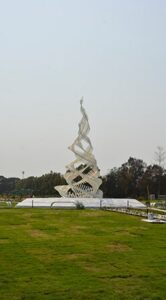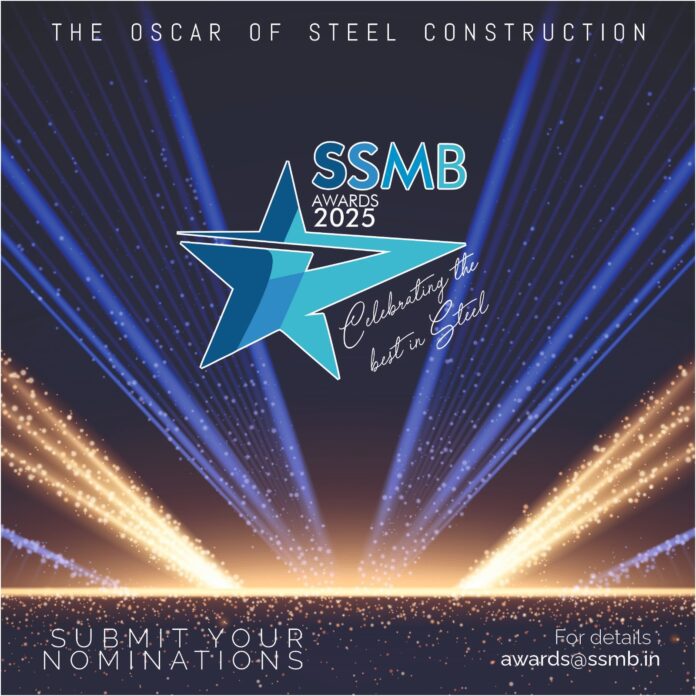Project Brief
Notions of India is a design competition in which one has to create an outdoor symbol or structure, preferably, using YST355 steel hollow sections along with other materials. The participants were expected to design a sculpture or structure that would signify the vision and journey of the nation into the future. Although there were external dimensional limits set, participants would endeavor to keep the same within the dimensional limits of 12 x 12 x 12 cubic meters.

Concept
The entire sculpture has been articulated as a flame rising from Mother Earth and reaching for the skies. Fire (Agni) symbolizes many things in the Indian culture like purity, spirituality, knowledge and enlightenment, all leading to the path of truth. It is this flame that resides within the depth of our subconscious mind and subsequently brings inanimate life to be. Agni is symbolic of intention. It also represents the higher faculties of the subconscious mind (superego), the part that wants us to thrive and informs the ego about what we need to do to evolve. This concept of the eternal flame is timeless and can easily transcend different generations.
The form is achieved through three Archimedean spirals (spines) that rise from three corners of a triangle with different numbers of revolutions and pitches, finally meeting at the top. The form has been proportioned to take the sightlines up as one sees the sculpture. Each spiral in the sculpture symbolizes one part of our mind i.e., the lower conscious, id, the higher conscious, superego and the conscious, the ego. The entire narrative in the sculpture is about how they all work together to evolve as a ‘kutumb’ (community). The spine becomes thinner as they go higher, symbolizing focus. The spikes on each of the spines symbolize the different thoughts that we start with and it keeps becoming smaller as we go up, finally merging into the spine, and thus, becoming one with the ‘kutumb’.
Choice of Material
Looking at the ideas of the architect, a tubular section was the first material that was chosen by the structural engineer due to the high radius of gyration. This became the best choice for this cantilever structure with so much of architectural inputs.
As compared to YST310 grade, there was a saving of around 10-15 percent of steel in YST355 grade. A hundred percent of the structure is primarily YST355 steel tubes. The tensile strength and the versatility of the material have been used to their utmost potential. The material is easy to work with since the dimensional tolerances are good and the material handles bending very well.
Software Used
ZW CAD and Sketchup have been used to create the design of this structure.
Structural Details
The structure is divided into two parts, the sub-ground structure (foundation) and the superstructure (the sculpture). The three spines are made of round hollow tubes bent to different radii and welded together into an Archimedean spiral. The bend gives the main form and the required strength for the structure.
The spikes are hollow sections welded perpendicularly to the spine. Stiffeners have been used to connect the spikes and the spine, and also increase the depth along the neutral axis to support more moments. The foundation is primarily reinforced cement concrete block with embedded starters of the three spines. The structure is very light compared to the visual volume that it creates and is easy to build as it is a finite structure with specific values.
The purity of form has been achieved using a single material. The tensile strength and the versatility of the material have been used to their utmost potential. The material is easy to work with as the dimensional tolerances are good and the material handles bending very well. Our experience with the material and the understanding of its characteristics in various environments have been the key to the confidence with which we propose this structure.


Challenges & Solutions
The selection of the different cross sections of members and proper splicing details without hindering the smoothness of members was a major challenge both for the designer and the fabricators. Additionally, the bending of tubes in the required shape was another challenge for the fabricators in their scope.
The availability of a wide range of tubular sections in higher yield strength really helped the structural engineer to easily select members without compromising the aesthetic appeal of the structure.




